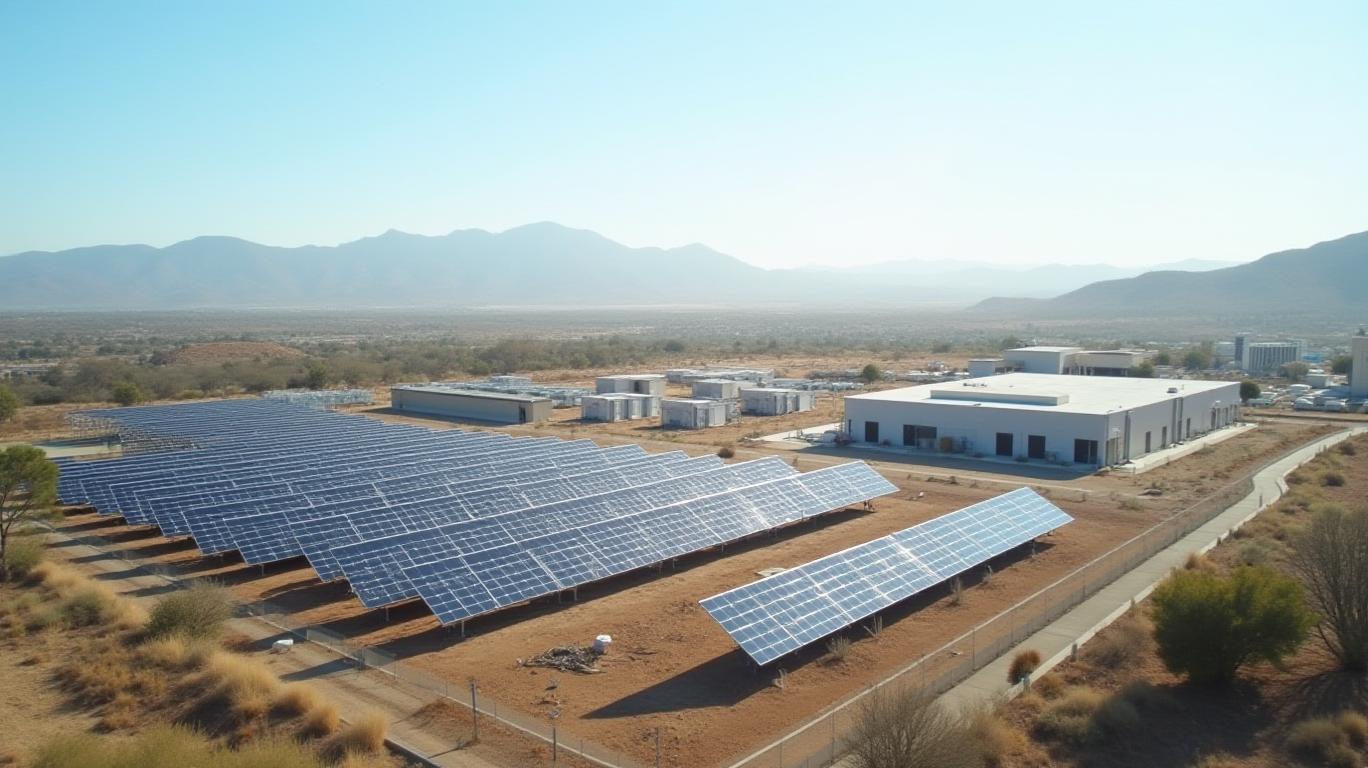Sunrun’s Solar Power Play: Why This Leader in Distributed Energy is a Climate-Driven Must-Hold
The renewable energy transition is no longer a distant ideal—it’s a roaring reality, and
(RUN) stands at the forefront of its most promising frontier: distributed solar-plus-storage systems. As utilities nationwide grapple with grid strain, climate volatility, and aging infrastructure, Sunrun’s innovative partnerships and policy-aligned strategies are positioning the company to capitalize on a $1.2 trillion global market for energy storage by 2040. For investors seeking to profit from decarbonization while bolstering grid resilience, Sunrun’s leadership in residential solar and its expanding virtual power plant (VPP) network make it a critical stake in the sustainable portfolio of the future.The Decentralized Grid: Sunrun’s Dominant Niche
Sunrun’s genius lies in its focus on distributed energy systems, which empower homeowners to generate and share solar power while storing excess energy in batteries. This model isn’t just eco-friendly—it’s becoming essential. Over 75% of U.S. households face peak-time energy costs exceeding $0.30/kWh, while blackouts surged 60% between 2010 and 2020 due to extreme weather. Sunrun’s solutions address both problems: its solar-plus-storage systems reduce household energy bills by up to 40%, while its VPPs aggregate customer-owned batteries into “distributed power plants” that stabilize grids during outages.

Why now? The company’s 2024-2025 partnership blitz has turned this vision into scalable revenue. Consider its collaboration with Tesla in Texas, where Sunrun is deploying VPPs that pay customers $400 annually per Powerwall. This program isn’t just a customer incentive—it’s a revenue generator for Sunrun, which manages the aggregated battery capacity as a grid resource. Similarly, its CalReady program now spans over 56,000 customer systems, delivering 375 MW of emergency power—equivalent to a mid-sized fossil fuel plant—while avoiding billions in grid infrastructure costs.
Policy Tailwinds: The Perfect Storm for Growth
Sunrun’s success isn’t accidental; it’s engineered to align with state and federal mandates accelerating the energy transition. Key catalysts include:
- California’s Net Energy Metering 3.0 (NEM 3.0): This policy slashed subsidies for solar-only systems, forcing customers to add storage—a shift Sunrun anticipated. Its storage attachment rate jumped from 50% to 69% in just one year, driving its Contracted Net Value Creation (CNVC) to a record $164 million in Q1 2025 (up 104% YoY).
- Microgrid Incentive Programs (MIP): Sunrun is a major beneficiary of California’s $200 million MIP, which funds community microgrids in wildfire-prone areas. Its partnership with PG&E on projects like the Blue Lake Rancheria tribal microgrid secures upfront payments while building long-term grid resilience.
- Federal Tax Credits: The Investment Tax Credit (ITC), averaging 43.6% in Q1 2025, slashed Sunrun’s system costs, fueling its $1.2 billion Aggregate Subscriber Value growth (up 23% YoY).
The Financial Case: Recurring Revenue Meets Climate Demand
Sunrun’s partnerships are unlocking recurring revenue streams previously unseen in solar. Its Vehicle-to-Home (V2H) program with Ford and BGE, for instance, pays customers up to $1,700 annually for sharing their electric truck batteries with the grid—a model that scales as EV adoption rises. Meanwhile, its Puerto Rico PowerOn program secured $24 million in upfront payments for deploying 4,000 batteries, directly boosting cash flow.
These programs are no one-off experiments. By Q1 2025, Sunrun had enrolled 20,000+ VPP customers across nine states, with enrollment surging 100% YoY. The result? A $56 million cash generation figure for the quarter—the fourth straight of positive cash flow—and a balance sheet strengthened by $605 million in unrestricted cash.
Why This is a Long-Term Winner
Sunrun isn’t just a solar installer; it’s a grid services pioneer. Its Sunrun Flex subscription model, launched in 2025, offers customers flexible solar-plus-storage plans without upfront costs—a game-changer in a market where 70% of households cite high installation costs as a barrier. Pair this with its $100 million debt reduction target for 2025, and Sunrun emerges as a financially disciplined leader in a sector rife with undercapitalized competitors.
The macro trends only amplify its potential. The U.S. residential solar market is projected to grow at 14% annually through 2030, while storage adoption must triple by 2035 to meet federal climate goals. Sunrun’s partnerships with utilities and automakers (like its bidirectional VPP with Ford) ensure it’s not just keeping pace—it’s setting the pace.
Invest Now: The Tipping Point is Here
Sunrun’s valuation—currently trading at 11.4x its 2025 forecasted revenue—remains compelling given its 50%+ annual revenue growth trajectory. With $164 million in CNVC and a 69% storage attachment rate, the company is monetizing the energy transition in ways few others can.
For investors, the calculus is clear: Sunrun is a pure-play bet on distributed energy’s rise, backed by policy tailwinds, scalable revenue models, and a market that’s only getting more urgent. In a world where grid resilience and decarbonization aren’t optional but existential, Sunrun isn’t just an investment—it’s an insurance policy for the climate-driven future.
Act now before the grid’s transformation leaves you in the dark.

Comments
No comments yet